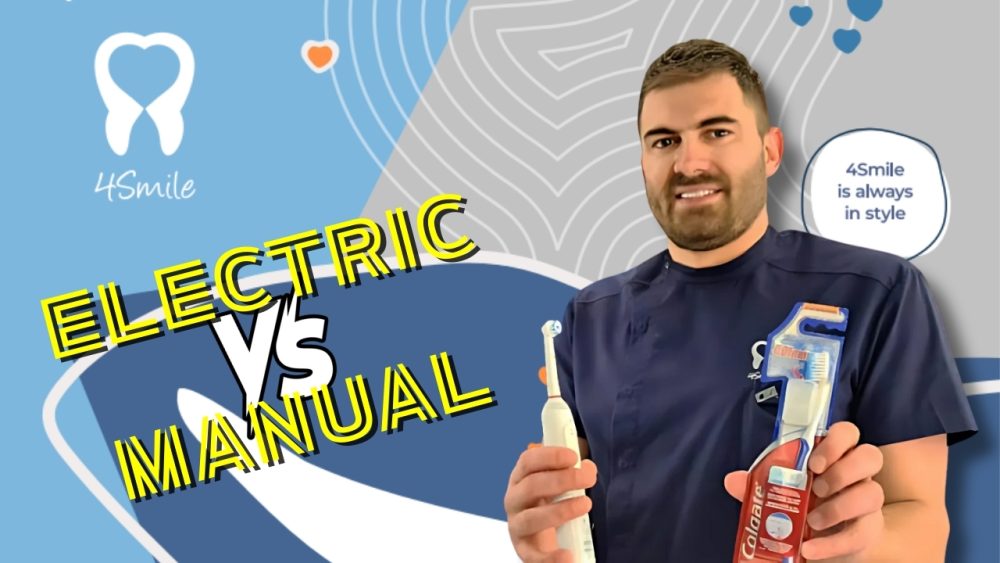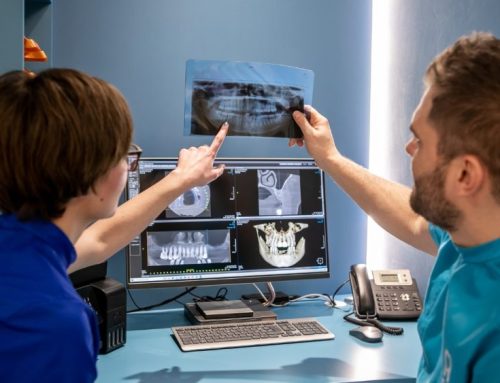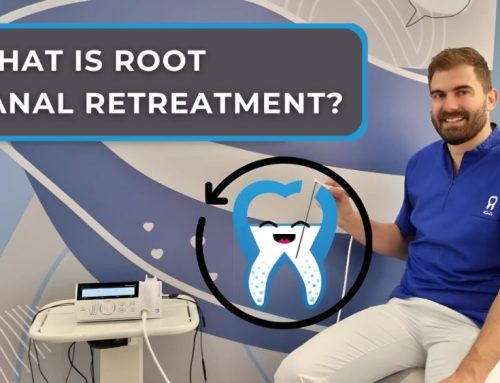From an early age, we are taught that it is important to brush our teeth at least twice a day for two minutes. In addition to various models of manual toothbrushes, electric toothbrushes have also been available on the market for many years. Regardless of which toothbrush you use, it is important to brush at a 45-degree angle from the gums toward the teeth and to use a brush with soft bristles.
In this week’s blog from Dental Center 4Smile, we will outline all the advantages and disadvantages of electric and manual toothbrushes. Once you see all the arguments laid out, we are sure it will be easier for you to decide which toothbrush is ideal for you.
ADVANTAGES OF A MANUAL TOOTHBRUSH
- Affordable price: Cheaper than electric toothbrushes.
- Availability: Found in almost every store and pharmacy.
- Practicality: Fits into any toiletry bag.
- Same technique, same results: As long as you brush correctly, there is actually no big difference compared to an electric toothbrush.
Manual toothbrushes are simple to use, widely available, and affordable. Some people feel they give them better control while brushing. This is because they have lightweight handles that fit easily in the hand. People with sensitive teeth or gums may also find it easier to control the pressure with a manual toothbrush, unless you buy an electric toothbrush with a pressure sensor (yes, those exist!).
DISADVANTAGES OF A MANUAL TOOTHBRUSH
- A bit more work: Unlike with an electric toothbrush, you’ll need to put in the effort to make the circular and back-and-forth motions needed for proper cleaning.
- Be careful: You may brush too hard with a manual toothbrush, which can potentially damage your gums and teeth. Overbrushing is noticeable if the bristles start to “fray” after just a short period of use.
- Too much choice: You might spend more time than you’d like trying to pick the right one. Different shapes, sizes, and bristle types, and whichever you choose, you can never be entirely sure you’ll be satisfied.
- Set an alarm: Many electric toothbrushes have built-in timers that automatically stop after 2 minutes. If you use a manual toothbrush, keep an eye on the clock to make sure you’re brushing long enough!
ADVANTAGES OF AN ELECTRIC TOOTHBRUSH
- Easy to use: The only thing you need to do is hold the toothbrush head at the correct angle.
- Less plaque: According to a 2015 consumer report, electric toothbrushes remove 21% more plaque than manual toothbrushes. That’s worth noting!
- Easier cleaning of prosthetics and braces: Plaque can sometimes build up in hard-to-reach areas, such as along the edge of a dental prosthetic or between braces brackets. If you find it difficult to keep braces clean, it might be time to switch to an electric toothbrush with a vibration feature.
- Timers: Many electric toothbrushes have built-in timers. If you tend to brush too quickly and too briefly, an electric toothbrush can help you slow down automatically.
Electric toothbrushes remove plaque almost like a deep cleaning. Their rotating heads thoroughly clean tooth surfaces. Many of them come with customized features and built-in timers that make brushing easier. They are excellent for people who want an easy yet effective brushing experience. For those with limited mobility, such as children, people with disabilities, older adults, or those with arthritis or other conditions that make brushing difficult, electric toothbrushes can be much easier to use.
DISADVANTAGES OF AN ELECTRIC TOOTHBRUSH
- Price: Electric toothbrushes are much more expensive than manual ones. Once you buy one—costing anywhere between €19.91 and €265.45, you’ll also need to consider buying a new brush head every three months.
- Fragile: Like most electronics, they have a lifespan. They should last a while, but there’s always a chance a part might break or stop working.
- Extra gear: Electric toothbrushes take up more space in your bathroom cabinet or travel bag. If you travel often, you’ll need to pack the toothbrush, charger or spare batteries, and replacement heads.
DENTIST IVAN ANTOLKOVIĆ’S ADVICE
If you decide to use an electric toothbrush, make sure it feels comfortable to hold and is easy to use. Personally, I prefer electric toothbrushes with a small head because they make it easier to brush hard-to-reach areas in the mouth. That’s why I choose Oral-B electric toothbrushes. Other features, such as adjustable power levels, timers, and rechargeable batteries, are optional, it’s a matter of personal preference. Follow the manufacturer’s instructions for when to replace the brush head to ensure it continues to work effectively. Whether you choose an electric or manual toothbrush, remember that the most important thing is daily and proper brushing, along with flossing or using an oral irrigator (waterpik).















